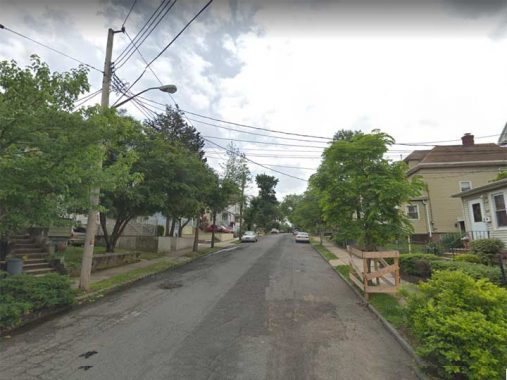Erastina Place isn’t easy to find, way out on Staten Island’s north shore in Mariners Harbor. You have to travel all the way down Richmond terrace past the Bayonne Bridge, turn left at De Hart Avenue, make another left on Orinoco Place, ignore the “No Outlet” signs and head up to Erastina Place, which is a lengthy dead end. It’s lined with one-family houses on individual plots. Why take note of this unusually-named street? It’s the last remnant of Buffalo Bill’s wild West Show, which played Mariners Harbor in 1886 and 1888 for crowds that totaled over a million in can era when NYC’s population was only two million.
First, the unusual name. In 1883, Erastus Wiman, in partnership with the Baltimore & Ohio Railroad, built a line to South Beach and along the North Shore, in addition to the already-existing Staten Island Rapid Transit, which began under Cornelius Vanderbilt in 1851.
By 1885, what would become the SIRT was complete, with the completion of the tunnel between Stapleton and the St. George Ferry. The ferry terminal opened in 1897 (the present-day terminal was constructed in 2005 after a fire destroyed the 1946 terminal, which in turn replaced the original, also destroyed by a blaze).
In 1886, partially as a way to promote the new railroad, Wiman opened an exhibition space called Erastina Woods, and one of the first attractions was the William “Buffalo Bill” Cody‘s Wild West Show, which had first played in Omaha, NE in 1883. It was “an outdoor extravaganza which featured historical reenactments, rodeo events, shooting exhibitions, and generally any impressive act that could conceivably depict life in the wild west. Cody’s exhibition traveled for thirty years, including a total of ten years in Europe, and was seen by hundreds of thousands of people. Cody’s idea of a traveling western circus was recreated by many other show business entrepreneurs, including quite a few of his star acts.” [Mentalfloss].
It was a fine spectacle but not without taking liberties with the facts: Native Americans were always portrayed as aggressive and warlike; and performers such as Annie Oakley were introduced as having lived on the frontier their entire lives. Oakley, who appeared at Erastina in 1886, was born in Ohio and despite her shooting prowess, had never seen the West before joining Buffalo Bill’s show.
Today, the dead-end Erastina Place is the last remnant of the Buffalo Bill spectacular. Wiman is also recalled by the dead-end Wiman Place in Clifton, several miles away.
Please help contribute to a new Forgotten NY website
Check out the ForgottenBook, take a look at the gift shop, and as always, “comment…as you see fit.”
12/17/18
